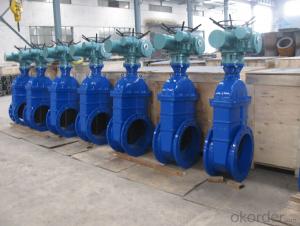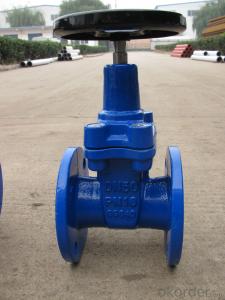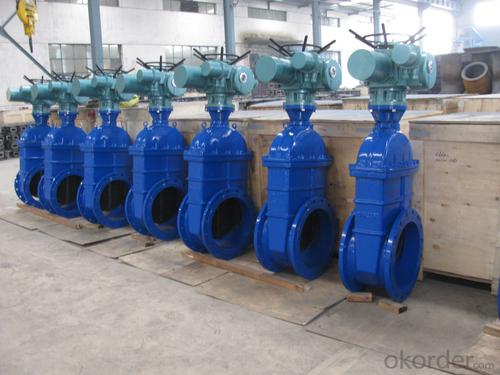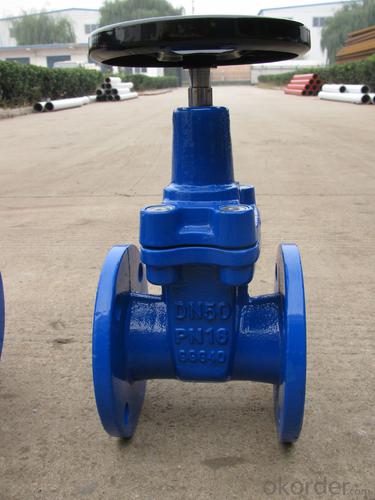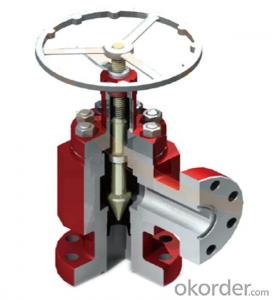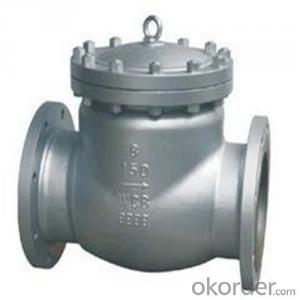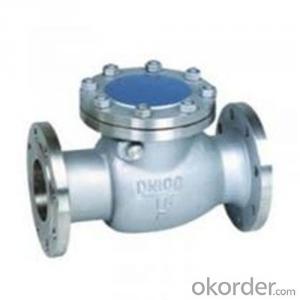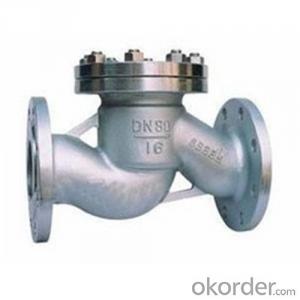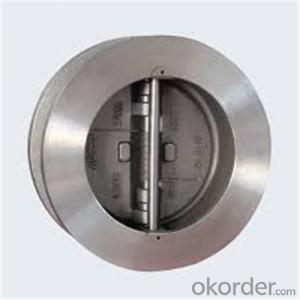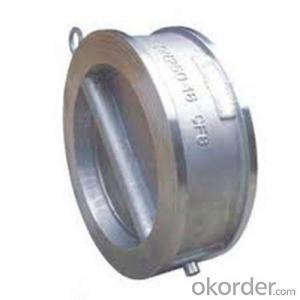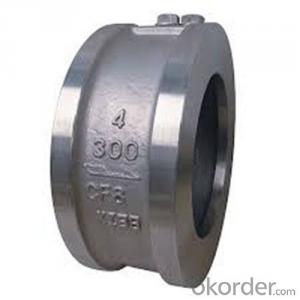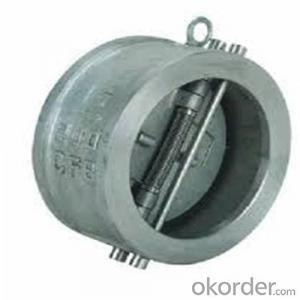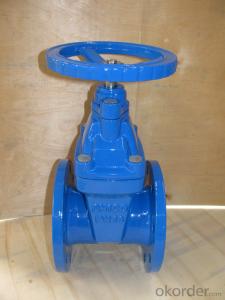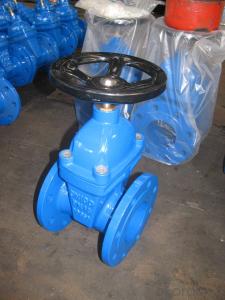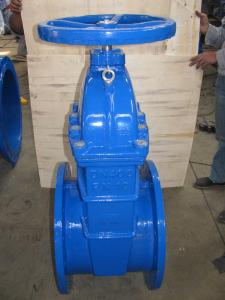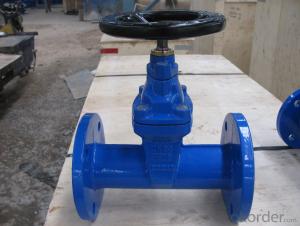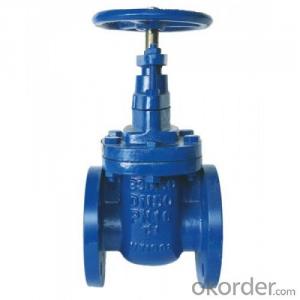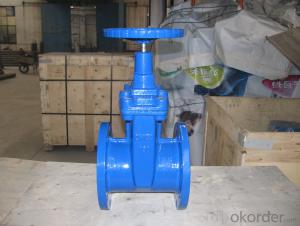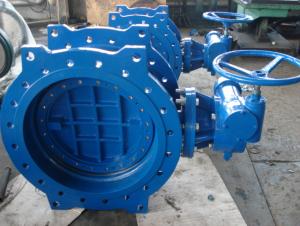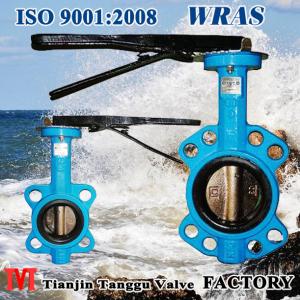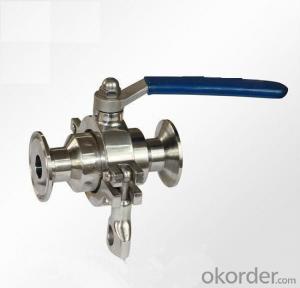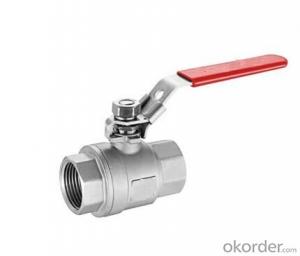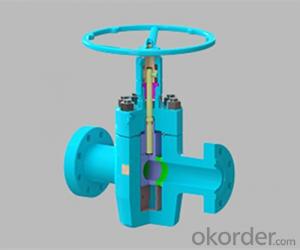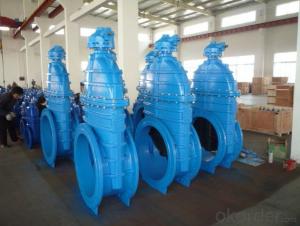Non-rising Stem Metal Seated Gate Valve DIN3202 F4
- Loading Port:
- China Main Port
- Payment Terms:
- TT OR LC
- Min Order Qty:
- -
- Supply Capability:
- -
OKorder Service Pledge
OKorder Financial Service
You Might Also Like
Type: | Non-Rising Stem |
Material: | Body: Cast Iron / Ductile Iron Wedge: Cast Iron / Ductile Iron Encapsulated with EPDM Seat: EPDM / NBR Shaft: SS410 Stem Nut: Brass O-ring: EPDM, NBR Wedge Nut: Brass / Bronze Hand Wheel: Ductile Iron
|
Operator: | Hand Wheel / Bevel Gearing / Square head / Electric actuator |
Face to Face: |
BS5163: 1986, DIN 3202 F4-F5, JIS B2002, ANSI B16.10
|
Flange: | BS4504, DIN 2532, JIS B2212, ANSI B16.10/ANSI B16.50
|
Working Pressure: | 16 Bar(200 PSI) |
Design and Manufacturer Standard : | BS5163, DIN 3352, JIS B2043 |
Test Standard: | API 598 BS6755 DIN 3230 JIS B2003 |
Application: | Water works, Sewage, Public facilties, Building industry, Petroleum, Chemical, Steel, Metallurgy, Paper Making Industry, Foods, Beverage, HVAC |
| | | | ||||||||
| | | | ||||||||
| | | | ||||||||
| | | | ||||||||
| | | | ||||||||
| | | | ||||||||
| | | | ||||||||
| | | | ||||||||
- Q: I have a 96 Toyota Camry. I am putting about 4 qts. of oil in it a month. Other than this issue and some other minor things this car is in great shape. It doesn't appear to be smoking from the tailpipe and I never find any puddles of oil under the car after it has been sitting in one place for a while. What can be wrong with my car causing it to eat this much oil. Every now and then I smell a little burning oil but it is not coming from the exhaust. I'm thinking a valve job. Engine has 250,000 miles on it and it runs great other than the oil thing. I drive it 116 miles a day back and forth to work. Any suggestions??? Help!!!
- The devil is indoors the extra advantageous factors. Is the motorized automobile indoors making use of variety the area you should look into. what variety homeowners. Any maintenance records. Is the unique distributors instruction manual secure. i'm going to have a Toyota mechanic placed it on a advance and look into under heavily. There are rubber boots that carry particular lubricants mandatory to the drivetrain that have a bent to crack and leak with age. Has the Air Cond plumbing been switched out to settle for the nice and comfortable variety refridegerant. Do the belts and hoses look right maintained? My advice is to bypass forward and stumble on extra present day variety with fewer miles. Older autos, even Toyotas with that many miles that have not been right maintained can develop right into a funds pit and pass away you stranded. making an investment extra funds now can advise saving multiple funds and subject indoors the destiny.
- Q: Where is the Canister vent shut valve located on a 2003 honda crv
- The canister vent shut valve is located in the evap canister. Rarely do we have issues with these. Usually we have issues with the 2 way valve or the bypass valve. Based on the age of the vehicle, the dealer would recommend replacement of these 2 valves as well as the canister. The reason for this is over time, when you fill the vehicle with gas, you try to top off the tank. The fuel winds up being pushed into the evap valves and the canister. This liquid gas causes the sensor to read wrong which results in this code.
- Q: i just bought a junky trumpet, didnt come with a mouthpiece... how can i tell that the valves work? They press in and dont stick, but im not sure about their functioning. Also there are no caps on the valves, will this affect playing? lastly, it has a stuck tuning slide, how can i get this to work again?
- whilst i develop into in intense college, I performed on a 3C and had a particularly good sound. in my view, i could in no way visit a smaller, shallower mouthpiece to play intense. i could quite develop my chops and be waiting to do it on a deeper mouthpiece. In college, I switched to and nonetheless at present play a Monette B2, that's analogous length to a a million a million/4C, and characteristic an excellent sound, and might play a intense G (4 ledger lines above the staff) and up on it. i exploit it for any group I play in, marching, stay overall performance, musical theatre, etc... ultimately it boils all the way down to private preferrence. %. the mouthpiece that feels the terrific to you and nonetheless can provide a good sound. you do not pick it so great and deep that your variety and sound go through, and you do not pick is purely too small and shallow which you get too outstanding and tinny of a sound. wish this facilitates.
- Q: I just got my water pump replaced on my Peerless boiler. Now my backflow valve is always dripping. I am unsure if I should cap it off or if the dripping will stop over time. It seems that there is some pressure comming from the vent. What should I do??
- They are like any valve that may not have to operate in a while, sediment in the line gets caught in the seat of the back flow preventer when pressure has been lost to one side. The valve can be disassembled and cleaned but is not for the novice unless you have a lot of time. You can cap it for now but get it repaired or replaced because you will have little protection in keeping boiler water from your drinking water if the pressure is lost.
- Q: the air valve, how does it propel a paintball in a blowback operated paintball gun how does the size/shape/?? of the valve impact how fast the paintball shoots?
- The majority of blowback paintball guns use a pin valve, which is opened when struck by the hammer. The hammer is held in the back position, with the spring compressed, by a sear. When the trigger is pulled, the hammer is propelled forward by the spring, into the valve. These sorts of markers generally use a “stacked tube” design, in which the valve and hammer is contained in the lower tube, while the bolt, which is connected to the hammer, is in the upper tube. The gas released by the valve is then simultaneously channeled up to the bolt to fire the paintball, and back to push the hammer back into the ****** position (hence the name “blowback”). Poppet valves are usually easy to replace and require little, if any, maintenance. The downside to this design, however, is its high operating pressure, which leads to a larger recoil and arguably less accuracy. The valve is usually designed to accommodate a specific operating pressure. Low pressure valves provide quieter operation and increased gas efficiency when tuned properly. However, excessively low pressure can decrease gas efficiency as dramatically as excessively high pressure. The volume of gas released by the valve directly affects the paintball's velocity. The velocity adjuster alters the pretension on the hammer spring which controls how long the pin valve is held open for, or more correctly how much gas must be released to push it back into the ****** position. EDIT - Sorry but wouldn't even know where to start on designing a valve.
- Q: where is the shuttle valve located in 03 land rover discovery hse ?
- The shuttle valve is a part of the brake modulator this problem is addressed by the replacement of the brake modulator and that's a $1,500.00 dollar part plus labor but I believe that they sell a shuttle valve repair kit for around $100.00 dollars.....
- Q: My new Trek 1000 has a type of valve stem different from the standard (car type) stem on my mountain bike. Do I need an adaptor to fit it to a pump or do I need a whole new pump? Also, have you seen a tire gauge that fits this stem type?
- This Site Might Help You. RE: Road bike valve stem type? My new Trek 1000 has a type of valve stem different from the standard (car type) stem on my mountain bike. Do I need an adaptor to fit it to a pump or do I need a whole new pump? Also, have you seen a tire gauge that fits this stem type?
- Q: My valve covers are leaking how do I take the intake off my v6 firebird?
- I think you are talking about the valve cover gaskets. This just requires the removal of the bolts holding the sides of the cover down. If it's actually the valve covers it will be the same thing but just make sure you get the new gaskets. Just don't over tighten the bolts or you could end up with a bad seal and they will keep leaking. You might as well just buy a $20 torque wrench if you don't have one.
- Q: and describe the direction and type of blood (oxygenated ot nonoxygenated) that flows through this valve.
- Mitral valve has two cusps. It is located between the left atrium and the left ventricle , oxygenated blood comes from the lungs by pulmonary veins and drains into the left atrium then the left atrium pumps this oxygenated blood through the mitral valve into the left ventricle. After that the left ventricle contracts pumping the blood through the aortic valve to the aorta..
- Q: What are Atrial valves??
- there isn't a sinoatrial valve in the human heart. There are 2 AV (atrioventricular) valves, and 2 semilunar valves, which are the aortic valve, and pulmonary valve. The AV valve seperate the atrium (on top) and ventricle (on bottom). Blood flows down from the atrium, to the ventricle, and then the AV valve closes to keep blood from going back into the atrium. While the valve is closed, the ventricle contracts, which send blood up through, the aorta ( left side) or the pulmonary trunk(right side). The semilunar valves seperate the ventricles from the aorta and the pulmonary trunk.
Send your message to us
Non-rising Stem Metal Seated Gate Valve DIN3202 F4
- Loading Port:
- China Main Port
- Payment Terms:
- TT OR LC
- Min Order Qty:
- -
- Supply Capability:
- -
OKorder Service Pledge
OKorder Financial Service
Similar products
Hot products
Hot Searches
Related keywords
